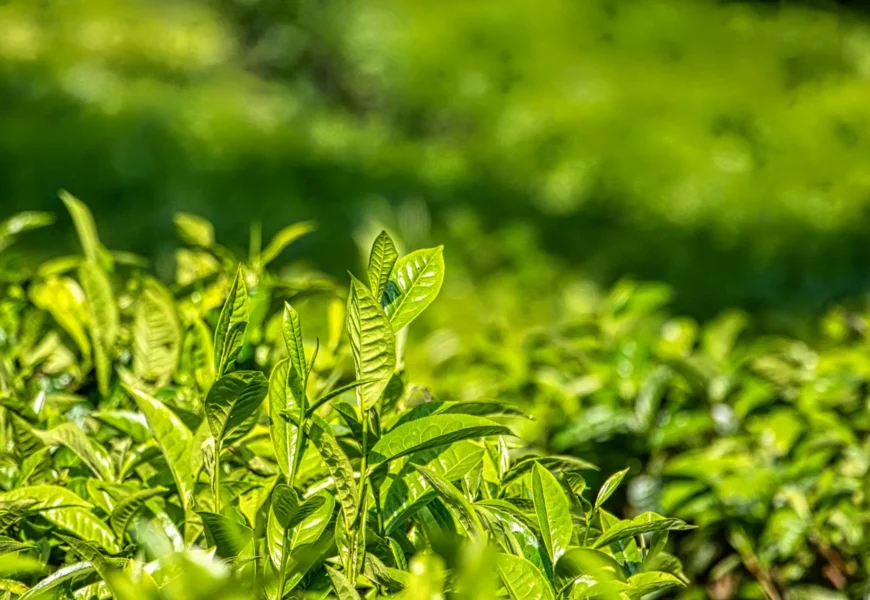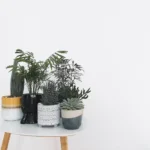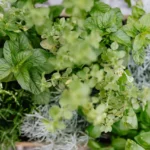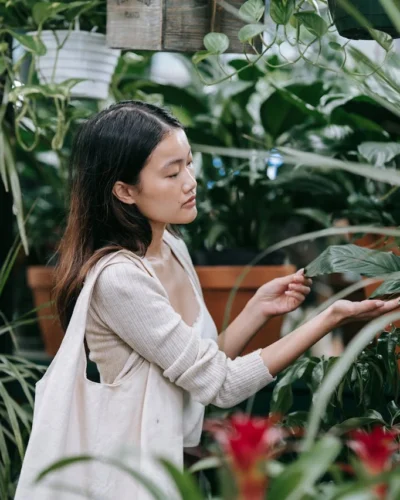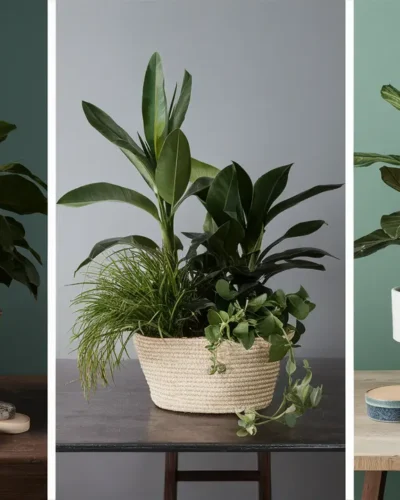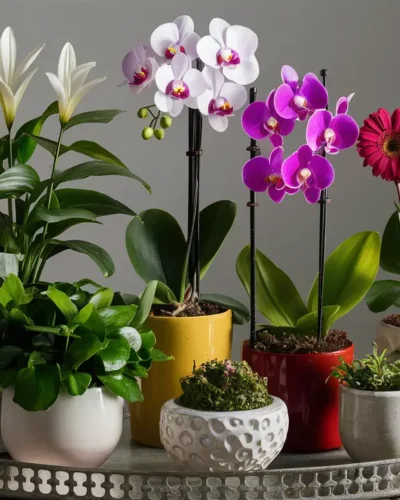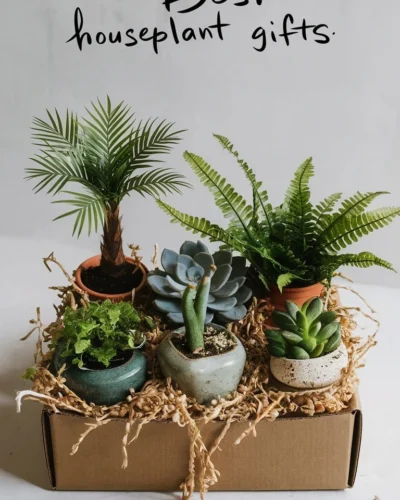Ah, the simple pleasures of life! A warm cup of tea on a chilly morning, the aroma of freshly brewed herbs filling your home, the joy of knowing you’ve grown your own deliciousness… All this and more can be yours with a flourishing indoor tea garden. This guide will lead you through the enchanting journey of transforming a humble seedling into a bountiful source of aromatic tea leaves.
Table of Contents
Let’s dive into the first step on our journey: choosing the right tea plants for your indoor tea garden.
- Choosing the Right Tea Plants: From the robust Camellia sinensis to the delicate peppermint, we’ll explore the best tea plants to thrive in your indoor haven.
- Selecting the Perfect Location and Soil: Finding the ideal spot and soil mixture is essential for healthy tea plants. We’ll discuss light requirements, drainage, and the art of soil blending.
- Planting and Caring for Your Tea Garden: From propagation to pruning, we’ll delve into the practicalities of nurturing your indoor tea garden.
- Harvesting and Processing Your Tea Leaves: Learn the secrets of knowing when to harvest and the various methods of drying and processing your leaves for maximum flavor.
- Enjoying Your Homegrown Tea: Let’s discuss the different ways to enjoy your freshly grown tea, from traditional steeping to creative culinary adventures.
Choosing the Right Tea Plants
Cultivating your own indoor tea garden is an exciting adventure, and the first step is choosing the right plants. Think of it like selecting the instruments for your musical masterpiece – the plants you choose will dictate the flavors and aromas of your tea symphony.
But with so many varieties of tea plants, how do you choose the right ones for your indoor tea garden? The answer is simple: consider the flavors you enjoy and the environment your plants will be in.

The Classics:
- Camellia sinensis: The quintessential tea plant, Camellia sinensis is the foundation for black, green, and white teas. It’s known for its adaptability and robust nature.
- Camellia sinensis var. assamica: A relative of the Camellia sinensis, assamica produces a bolder, more robust tea with a distinct character. It’s often used in blends with other teas.
The Herbalists’ Delight:
- Peppermint: This versatile herb offers a refreshing and cooling flavor. It can be enjoyed as a tea or used to enhance culinary creations.
- Lemon Balm: Known for its citrusy aroma and soothing properties, lemon balm is a delightful addition to any indoor tea garden.
- Chamomile: A true calming classic, chamomile is renowned for its soothing properties. It’s perfect for relaxing evenings or promoting restful sleep.
Factors to Consider:
- Light: Most tea plants thrive in bright, indirect light. Choose a sunny spot in your home.
- Space: Consider the size of your plants and the space available in your indoor tea garden.
- Climate: Ensure the plants you choose can withstand the temperature and humidity of your home.
With a little research and careful planning, you’ll be well on your way to building a beautiful and flavorful indoor tea garden that will delight your senses and provide you with a continuous supply of fresh, homemade tea.
Let’s move on to the next step: selecting the perfect location and soil for your flourishing indoor tea garden.
Selecting the Perfect Location and Soil for Your Indoor Tea Garden
Once you’ve decided on the types of indoor tea plants you want to cultivate, the next step is finding the ideal spot and soil for your indoor tea garden. Choosing the right location and soil will make a huge difference in the health and growth of your tea plants. Here’s a breakdown of the key factors to consider:
Location:
- Sunlight: Tea plants thrive in bright, indirect sunlight. Aim for a spot that receives at least six hours of sunlight per day, but avoid direct, harsh sunlight which can scorch the leaves. A south-facing window with a sheer curtain is ideal.
- Temperature: Tea plants prefer temperatures between 65-75°F (18-24°C). Avoid placing your indoor tea garden near drafty windows or heating vents that can cause drastic temperature fluctuations.
- Humidity: Tea plants love humidity! Consider placing a humidifier near your indoor tea garden or grouping your plants together to create a microclimate that retains moisture.
- Space: As your tea plants grow, they’ll need adequate space. Ensure you have enough room to accommodate the mature size of your plants.
Soil:
- Well-Drained: Tea plants are susceptible to root rot, so it’s crucial to choose a well-draining soil that doesn’t hold water.
- Slightly Acidic: Tea plants prefer a slightly acidic soil with a pH range of 5.5 to 6.5. You can adjust the pH of your soil using a soil test kit and adding acidic amendments like peat moss or sulfur.
- Nutrient-Rich: Tea plants require a consistent supply of nutrients to thrive. Choose a potting mix that contains organic matter like compost or coco coir to provide essential nutrients.
Benefits of an Indoor Tea Garden:
Creating an indoor tea garden offers numerous benefits:
- Fresh, High-Quality Tea: Growing your own tea means you’ll have access to the freshest, highest quality tea leaves right at your fingertips!
- Year-Round Harvest: Unlike outdoor gardens, an indoor tea garden allows you to enjoy fresh tea year-round, regardless of the weather.
- Decorative Element: An indoor tea garden adds a touch of nature and beauty to your home.
- Therapeutic Activity: The process of tending to your indoor tea garden can be a calming and meditative experience.
Resources for Further Information:
- “From Seedling to Steeping: Cultivate Your Own Indoor Tea Garden for Fresh Brews“: This blog post from SproutFolk provides a comprehensive guide to starting and maintaining an indoor tea garden.
- “How to Grow Tea Plants Indoors“: This article from Gardening Know How offers practical tips on growing tea plants indoors, including information on soil, lighting, and care.
Remember: With a little care and attention, you’ll be sipping on your very own homegrown tea in no time! Enjoy the journey of cultivating your own indoor tea garden, and let us know if you have any questions.
Planting and Caring for Your Tea Garden
Now that you’ve chosen your tea plants and found the perfect spot, it’s time to get your hands dirty! Planting and caring for your indoor tea garden is a rewarding experience. Here’s a step-by-step guide to help you cultivate a thriving tea garden indoors:
1. Planting:
- Prepare the soil: Use a well-draining potting mix specifically designed for herbs or vegetables. You can add a little bit of compost or peat moss to the mix for extra nutrients.
- Choose the right pots: Opt for pots with drainage holes to prevent waterlogging. Make sure the pots are large enough to accommodate the root system of your tea plants.
- Plant your tea plants: Carefully remove the tea plants from their nursery pots and loosen the roots gently. Place them in their new pots, ensuring the top of the root ball is slightly below the rim of the pot. Fill the remaining space with potting mix and gently pat it down.
- Water thoroughly: After planting, give your tea plants a good watering to settle the roots.
2. Watering:
- Maintain consistent moisture: Tea plants prefer consistently moist soil, but they don’t like to be waterlogged. Water them thoroughly when the top inch of soil feels dry.
- Monitor drainage: Ensure that the drainage holes are working properly to prevent water from accumulating in the pots.
3. Providing Light:
- Choose a bright location: Tea plants require a lot of sunlight, so place them in a window that receives at least 6 hours of direct sunlight each day.
- Consider grow lights: If your home doesn’t have enough natural light, use a grow light to supplement.
4. Fertilizing:
- Feed regularly: Use a balanced liquid fertilizer every 2-3 weeks during the growing season.
- Don’t overfertilize: Too much fertilizer can burn the roots.
5. Pruning:
- Pinch back new growth: Pinching back the tips of new growth will encourage bushier growth and more leaves.
- Remove any dead or damaged branches: This will help to maintain the health of your tea garden.
6. Pest and Disease Control:
- Inspect your plants regularly: Check for any signs of pests or diseases.
- Use natural pest control methods: If you find any pests, try using insecticidal soap or neem oil.
7. Enjoying the Process:
- Observe your plants: Take the time to notice the subtle changes in your tea plants. You might even see new buds forming!
- Share your passion: Tell your friends and family about your indoor tea garden and invite them to a tea garden party to enjoy the fruits (or should we say leaves) of your labor.
Benefits of Growing Your Own Tea:
- Freshness and Quality: Growing your own tea ensures you’re getting the freshest and highest quality leaves.
- Customization: Experiment with different tea varieties and blends to create your own unique teas.
- Sustainability: Reduce your environmental impact by growing your own tea instead of buying it from a store.
- Therapeutic Value: The process of growing your own tea can be incredibly therapeutic and relaxing.
- Indoor Tea Garden Benefits: Growing your own tea indoors provides a sense of connection with nature and a beautiful green space within your home. It also improves air quality and adds a touch of tranquility to your environment.
Here are some additional resources to help you grow your own tea:
By following these simple steps, you can successfully create a thriving indoor tea garden. Enjoy the process of nurturing your plants, and savor the delicious, homegrown tea you’ll be able to enjoy.
4. Harvesting and Processing Your Tea Leaves: From Garden to Cup
You’ve nurtured your indoor tea garden with care, and now it’s time to reap the rewards of your labor! Harvesting your tea leaves is a satisfying experience, knowing you’re about to enjoy the fruits of your indoor herbal tea garden.
When to Harvest:
The best time to harvest your tea leaves is in the morning, after the dew has dried. Look for new growth, often identified by bright, vibrant green leaves. The size of the leaves depends on the type of tea you’re growing. For example, white tea uses unopened buds, while black tea requires fully developed leaves.
Harvesting Techniques:
Use clean shears or scissors to gently pluck the leaves from the stem. For white tea, simply harvest the unopened buds. For green tea, you’ll want the top two leaves and the bud. For black tea, harvest the top three leaves and the bud.
Processing Your Tea Leaves:
Once harvested, your leaves are ready for processing. This step transforms the fresh leaves into the tea you’ll enjoy. There are various processing methods, each affecting the final taste and character of your tea. Here are some key processing steps:
- Withering: This step involves drying the leaves slightly to reduce moisture content, typically in a well-ventilated area.
- Rolling: This step involves rolling the leaves to break down their cell walls and release their aromas.
- Oxidation: This step involves exposing the leaves to air, allowing them to oxidize and develop their unique flavor profile.
- Drying: This step involves drying the leaves further to stop the oxidation process and preserve the tea.
Note: Depending on the type of tea you’re making, some steps may be omitted or modified. For instance, white tea requires minimal processing to preserve its delicate flavors.
Enjoying Your Homegrown Tea:
After processing, you can enjoy your homemade tea! The unique flavor profiles of your indoor tea garden varieties will surprise you. Whether you prefer a refreshing green tea or a robust black tea, you can now experience the joy of growing tea plants indoors and savoring the taste of your hard work.
Tips for Processing Your Tea:
- Experiment: There’s no right or wrong way to process your tea leaves. Try different methods to discover what you like best.
- Resources: Explore resources like From Seedling to Steeping: Cultivate Your Own Indoor Tea Garden for Fresh Brews for detailed information on processing specific tea varieties.
- Patience: Processing tea takes time and attention. Enjoy the journey and learn as you go.
Creating your own indoor tea garden is a rewarding experience, offering a unique way to connect with nature and enjoy fresh, flavorful tea. So, grab your shears and let the tea-making adventure begin!
5. Enjoying Your Homegrown Tea
Now that you’ve successfully cultivated your indoor tea garden, it’s time to reap the rewards of your hard work. The journey from seedling to steeping cup is truly rewarding! You’ll savor the unique flavors and aromas of your homegrown tea, knowing you cultivated it from the ground up.
One of the biggest indoor tea garden benefits is the opportunity to host an indoor garden tea party! Invite your friends over to share your freshly brewed tea and enjoy the vibrant atmosphere of your indoor tea garden. This experience is a great way to showcase your gardening skills and introduce your guests to the wonders of homegrown tea.
To truly enhance your tea-drinking experience, consider experimenting with different brewing methods. Some popular options include:
- Infusion: This classic method involves steeping tea leaves in hot water for a specific time.
- Decoction: This method involves boiling the tea leaves in water for a longer period, extracting more of their flavors and properties.
- Cold brewing: A refreshing option where tea leaves are steeped in cold water for a longer time, resulting in a smoother and less bitter brew.
No matter your preferred brewing method, remember to use fresh, high-quality water for the best results.
Conclusion
Creating an indoor tea garden is an enriching and rewarding experience. You’ll enjoy the indoor tea garden benefits of fresh, homegrown tea, a beautiful indoor space, and a sense of accomplishment. It’s an exciting way to connect with nature, explore the world of tea, and create a calming oasis within your home.
Remember to be patient, persistent, and most importantly, have fun! With the right knowledge and care, you can cultivate a flourishing indoor tea garden that will provide you with years of enjoyment.
Whether you’re a seasoned tea enthusiast or a curious beginner, we encourage you to embark on this journey. You might be surprised at the rewards of growing your own indoor tea garden.
This article was written using information from: From Seedling to Steeping: Cultivate Your Own Indoor Tea Garden for Fresh Brews

